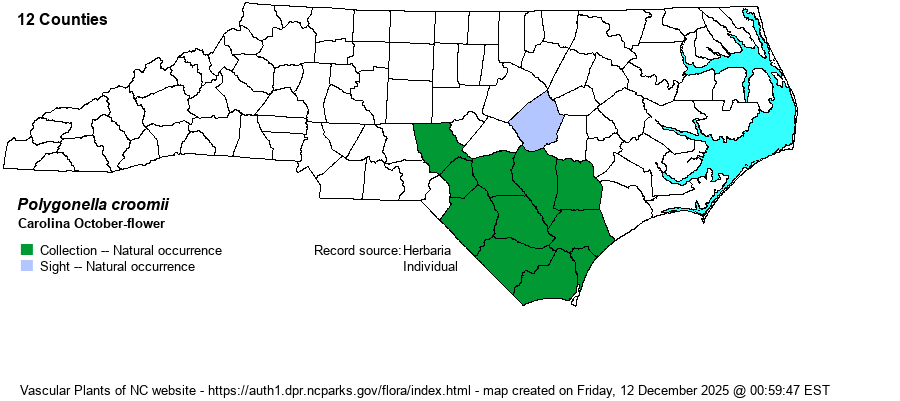Show/Hide Synonym
| taxonName | relationship | relatedTaxonName | relatedTaxonRefText | relComments |
|---|
|
| Polygonella croomii | = | Polygonella polygama var. croomii | Flora of North America (1993b, 1997, 2000, 2002a, 2002b, 2003a, 2004b, 2005, 2006a, 2006b, 2006c, 2007a, 2009, 2010) | | | Polygonella croomii | = | Polygonella polygama var. croomii | Ronse Decraene, Hong, & Smets (2004) Brandbyge in Kubitzki, Rohwer, & Bittrich (1993). Key adapted from FNA and other sources. | | | Polygonella croomii | = | Polygonella polygama var. croomii | Ronse Decraene, Hong, & Smets (2004) Brandbyge in Kubitzki, Rohwer, & Bittrich (1993). Key adapted from FNA and other sources. | | | Polygonella croomii | < | Polygonella polygama | | | | Polygonella croomii | < | Polygonella polygama | Radford, Ahles, and Bell (1968) | | | Polygonella croomii | < | Polygonella polygama | Ronse Decraene, Hong, & Smets (2004) Brandbyge in Kubitzki, Rohwer, & Bittrich (1993). Key adapted from FNA and other sources. | | | Polygonella croomii | = | Polygonum polygamum var. croomii | | | | Polygonella croomii | = | Polygonum polygamum var. croomii | Ronse Decraene, Hong, & Smets (2004) Brandbyge in Kubitzki, Rohwer, & Bittrich (1993). Key adapted from FNA and other sources. | | | Source: Weakley's Flora |
|

